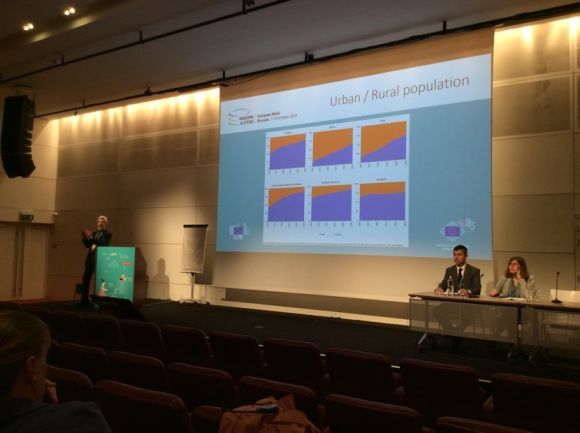
What you just read is true: everyone in Europe wants to be like this small-southern Italian city. Pride of Place is an innovative initiative that wants to spread the Matera miracle to other places in Europe.
Two years ago, The Guardian published an article titled: The miracle of Matera: from city of poverty and squalor to hip hub for cave-dwellers. But what happened in Matera isn’t just a miracle… This city suffered from a problem that lots of countries in Europe (and around the world) are facing: depopulation. People had been losing their faith in Matera as it had nothing to offer them. But, suddenly, some money was invested in infrastructures and in renewing historical sites. People started adopting a more positive perspective: something had changed. An old touristic industry re-emerged, making people (again) proud of their city.
The Matera miracle is the perfect example of what is Pride of Place about. This innovative initiative, inserted in the Erasmus+ programme and result of the cooperation of several universities led by the Anatta Foundation in the EU territory, tries to promote the civil engagement in rural areas. The reason why this initiative emerged is a current problem all over Europe: depopulation. According to Eurostat, in 2015, the 72% of the EU population lived in urban areas. This is clear evidence of the high number of people moving to find more economical opportunities. This results in depopulating some villages in Spain, e.g. the ones close to Madrid.
But how is Pride of Place supposed to do this? They generated this new concept out of two pre-existing ones: the place attachment, which is the feeling of missing a place when we are no there; and the place identity, which is being identified with the values and way of being of a certain city. Pride of Place mix these two concepts adding the pride, which, according to this initiative, helps to make people remain in a city rather than moving to another.
In one of the universities involved, the Psychology Department of the Sapienza University of Rome, there’s also a psychological approach in this concept. First, it is all based in the self-determination theory: three aspects every human being needs in order to be happy. These are: autonomy, which is to be free to do what you want; competence, which is the ability to do something successfully or efficiently; and finally, the relatedness, which is the social aspect, it is caring for the others, and others taking care of us. Pride of Place also looks to find an answer to the question why pride is good. They say that positive emotions such as this one makes you be more active, which results in you feeling happier.
And by fostering these, residents will experience three consequences divided into two groups: one, feeling good and being happier, and two, protecting the good policies within the region, on the positive side, and the emerging of a narcissist feeling, on the negative side. Therefore, the consequences of Pride of Place are mainly positive.
Fostering the development of rural areas by generating wellness and fulfillness, is what happened in Matera, but if we do this while looking after the pride as the centre of everything, we find the innovative idea of Pride of Place: a solution needed in Europe, born there, and made to change the world.
Written by: Javier Mª González-Jurado (Spain)
Edited by: Iskra Tsankova (Bulgaria)



